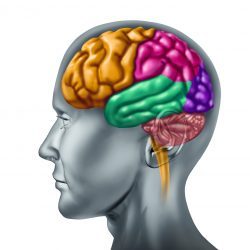“The secret is here in the present. If you pay attention to the present, you can improve upon it. And, if you improve on the present, what comes later will also be better.” Paulo Coelho
In a recent post, I listed the various types of therapy being used to treat my Parkinson’s. Importantly, I believe in modern medical treatment; a Dopamine Agonist (Ropinirole) has improved the quality of my life. However, I am also using a Complementary and Alternative Medicine (CAM) approach to treat my Parkinson’s.
What is Complementary and Alternative Medicine (CAM)? The National Institutes of Health (http://www.cancer.gov/cancertopics/cam) defines CAM as follows: “Complementary and alternative medicine (CAM) is the term for medical products and practices that are not part of standard medical care. ‘Complementary medicine’ refers to treatments that are used with standard treatment. ‘Alternative medicine’ refers to treatments that are used instead of standard treatment.” For a nice overview of CAM, go here: http://www.merckmanuals.com/professional/special_subjects/complementary_and_alternative_medicine/overview_of_complementary_and_alternative_medicine.html
A Bunch of Grapes vs the Substantia Nigra? A small region of the mid-brain, called the substantia nigra, is responsible for making the all-essential neurotransmitter dopamine (for more details, go here: http://www.buzzle.com/articles/function-and-location-of-substantia-nigra.html). Parkinson’s begins because the cells in the substantia nigra have died. It takes a ~50% loss of these cells for the first symptoms to appear in Parkinson’s. The picture above shows the location of the substantia nigra in the brain, and the bunches of grapes represent the cells of the substantia nigra (left to right 100%, 50% and 0% grapes, respectively). For those of us with Parkinson’s, the goal is simple, do whatever one can do (to try) to preserve the bunch of grapes at the ~50% level (middle panel of grapes, i.e., cells of the substantia nigra). The CAM strategy below has been designed to protect and preserve ‘my bunch of grapes’ for as long as possible.
My medical strategy for treating Parkinson’s goes as follows:
Requip XL (Ropinirole 3x daily)
Isradipine (a dihydropyridine-class calcium Channel blocker; 3x daily) [to be discussed at a later time]
My CAM strategy for treating Parkinson’s goes as follows [Please note that these views and opinions expressed here are my own. Content presented here is not meant as medical advice. Definitely consult with your physician before taking any type of supplements.]:
VITAMINS:
Vitamin B Complex (B1, B2, B3, B6, Folate, B12, Biotin, Pantothenic, 1 cap daily) are important for brain and nervous system health;
Vitamin C with Bioflavonoids (1000 mg daily) is an antioxidant to help reduce free radical/inflammation that might harm cells of the substantia nigra;
Vitamin D3 (5000 IU MWF) is important for building strong bones. Now we also know that D3 is almost like ‘brain candy’ because it stimulates hundreds of brain genes, some of which are anti-inflammatory and some support nerve health (http://www.drperlmutter.com/vitamin-d-parkinsons-disease/). Supplementation with D3 (1200 IU/day) for a year slowed the progression of certain types of Parkinson’s (http://www.reuters.com/article/2013/03/27/us-vitamind-parkinson-idUSBRE92Q15L20130327). To read this paper, go here: http://ajcn.nutrition.org/content/97/5/1004.full?sid=ae38fc4e-771b-451b-8e9a-107ff59a9add Furthermore, augmentation with D3 was recently shown to slow cognitive issues in Parkinson’s (http://www.medicalnewstoday.com/articles/271409.php). To read this paper, go here: http://iospress.metapress.com/content/t587180765787517/?p=
Vitamin E (400 IU daily) is an antioxidant to help reduce free radical/inflammation that might harm cells of the substantia nigra;
Daily multiple vitamin– A high-potency multivitamin with minerals to meet requirements of essential nutrients.
ANTIOXIDANTS/MISC.:
Grape Seed (100 mg polyphenols, daily) is an antioxidant that crosses the blood-brain barrier, which could reduce both free-radical damage and inflammation in Parkinson’s;
N-Acetyl-Cysteine (NAC; 600 mg x 2 daily) is a precursor to glutathione, a powerful anti-oxidant. In several studies, NAC has been shown to be neuroprotective in Parkinson’s (http://www.sciencedirect.com/science/article/pii/S0306987712001405). A clinical trial with NAC in Parkinson’s is underway and is scheduled to be completed in summer 2016 (https://clinicaltrials.gov/ct2/show/NCT01470027);
Melatonin (3 mg 1 hr before sleep) Melatonin is a hormone that promotes sustained sleep. Melatonin is also thought to be neuroprotective (http://www.ncbi.nlm.nih.gov/pmc/articles/PMC3187674/)
Probiotic Complex with Acidophilus is a source of ‘friendly’ bacteria to contribute to a healthy GI tract;
trans-Resveratrol (200 mg daily) is an antioxidant that crosses the blood-brain barrier, which could reduce both free-radical damage and inflammation in Parkinson’s;
Ubiquinol (reduced CoQ10, 100 mg daily) is the reduced form of CoQ10 (more readily absorbed). CoQ10 is found in the mitochondria (little energy factories) of cells, and it helps produce energy and prevents cell death. It was long thought that CoQ10 could slow Parkinson’s progression. However, new results showed that CoQ10 had no effect on the progression of Parkinson’s symptoms in early-stage disease (http://www.pdf.org/en/science_news/release/pr_1398181054).
Compared to many Parkinson’s patients, my list of CAM substances is relatively modest. No doubt, over time, it will change/evolve as I read more and understand Parkinson’s better (I will keep you updated).
“Remember Red, hope is a good thing, maybe the best of things, and no good thing ever dies.” Andy Dufresne to Red (in a letter), The Shawshank Redemption




5 Replies to “Complementary and Alternative Medicine (CAM) in Parkinson’s”